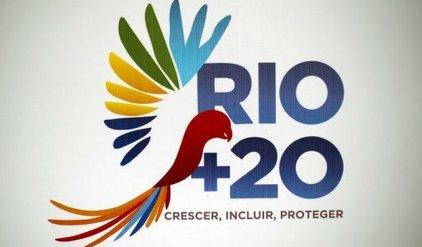Rio’s call to action on disaster risk reduction
RIO DE JANEIRO, 22 June 2012 - The largest UN summit ever organized closes today with an urgent worldwide call for accelerated implementation of the international blueprint for disaster risk reduction agreed by all UN member States seven years ago.
Against a backdrop of 1.3 million deaths, 4.4 billion people affected and $2 trillion in economic losses from disasters since the 1992 Rio Earth Summit, Heads of State and high-level representatives urged States, international financial institutions, international organizations and civil society "to accelerate implementation" of the Hyogo Framework for Action 2005-2015: Building the Resilience of Nations and Communities to Disasters.
"We call for disaster risk reduction and building of resilience to disasters to be addressed with a renewed sense of urgency in the context of sustainable development and poverty eradication, and, as appropriate, to be integrated into policies, plans, programmes, and budgets at all levels and considered within relevant future frameworks," they declared in the outcome document -- the Future We Want -- of the Rio+20 UN Conference on Sustainable Development.
They also noted with grave concern the significant gap between mitigation pledges in terms of global annual emissions of greenhouse gases by 2020 and "aggregate emission pathways consistent with having a likely chance of holding the increase in global average temperature below 2 °C or 1.5 °C above pre-industrial levels."
Margareta Wahlström, UN Special Representative for Disaster Reduction, who is in Rio de Janeiro for the summit, commended the declaration's focus on future risk levels. "The potential for disaster is always rising. It's going to be hard to maintain the same level of safety, especially with overpopulation and land pressure, climate change, permafrost melting and extreme weather.
"The declaration contains a section on disaster risk reduction that sets a firm foundation for discussions on a post-2015 framework to continue guiding nations after the Hyogo Framework expires three years from now.
"So far in our initial consultations, people tell us we have to focus on the integration of climate adaptation and risk reduction. It's a matter of having supportive policies in place, strengthening institutional competencies and tapping enough resources to make things happen. Also, people told us there weren't enough instruments to help local leaders manage urban risk. This is important because a lot of development work is done in urban areas," said Ms. Wahlström, who is also head of the UN office for disaster risk reduction, UNISDR.
Since 2005, 193 member States have endorsed the Hyogo Framework's five priorities, with 133 governments actively reporting on implementation. More than 1,000 cities around the world have committed to reducing risk at the local level to complement national-level efforts, using role model cities and peer-to-peer learning to accelerate progress as members of UNISDR's "Making Cities Resilient" Campaign. Some 81 countries have set up National Platforms for Disaster Risk Reduction -- interdisciplinary bodies within nations charged with monitoring in-country progress on reducing risk.
Governments are also stressing the importance of creating stronger links between disaster risk reduction, recovery and long-term development planning.
There is also a demand for more "coordinated and comprehensive strategies" that integrate disaster risk reduction and climate change adaptation considerations into public and private investment, decision making and planning of humanitarian and development actions to reduce risk, to increase resilience and provide a smoother transition between relief, recovery and development.
The text has governments calling on a variety of actors -- from government to civil society, the scientific community, academia and the private sector -- to take measures to reduce the exposure of people, infrastructure and other national assets to risk, in line with the Hyogo Framework for Action and any post-2015 framework for disaster risk reduction that might follow.
Elsewhere in the text, the importance of disaster risk reduction in urban planning is stressed in a section on sustainable cities and human settlements.
A section on capacity building highlights the role of the United Nations to support developing countries and, in particular, least developed countries, to build their capacity to develop "resource-efficient and inclusive economies," by enhancing knowledge and capacity to integrate disaster risk reduction and resilience into development plans.
In the days before the conference, governments, international bodies and civil society organizations held over 40 side events relating to disaster risk reduction, stressing its importance in the areas of health, agriculture, urban living, energy supply, climate change and other areas.
In detial at : www.cdrn.org.in
Source:- http://www.unisdr.org/archive/27335

No comments:
Post a Comment